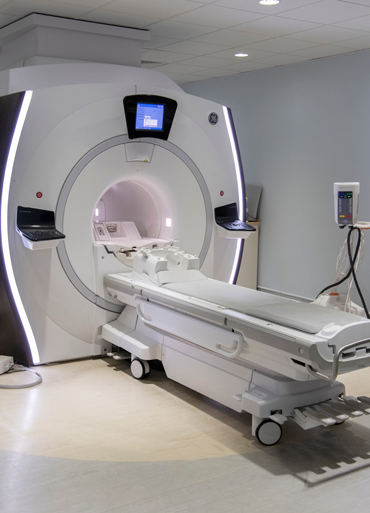Diagnosing phaeochromocytomas
There are different tests to diagnose phaeochromocytomas. These include blood and urine tests, CT, MRI and PET scans, and a type of scan called an MIBG scan.
Diagnosing phaeochromocytomas can be difficult. This is because they can cause a range of symptoms. And many of these can be caused by other conditions that are much more common.
Your GP will refer you to a specialist for tests if you have symptoms that could be caused by phaeochromocytoma. You might have some of the following tests.
Blood and urine tests
Doctors measure the amount of metanephrines in your urine (wee) and sometimes your blood (plasma). Metanephrines are the products made by the body when it breaks down the hormones adrenaline and noradrenaline.
Phaeochromocytomas can make large amounts of these hormones. This means the level of metanephrines in your blood and urine are higher than normal. You collect your urine over 24 hours to give a more accurate result. Your doctor will tell you how to do this.
They will tell you what food and drink you should avoid for a few days before these tests. These include:
- coffee
- tea
- chocolate
- bananas
- citrus fruits
This is because they can affect your test results. Your doctor will also tell you if there are any medicines that you need to stop taking before and during the tests.
For the blood test, your doctor or nurse will usually ask you to lie down for 20 to 30 minutes before they take the sample.
CT scan
A CT scanner takes x-rays from different angles to form a detailed image of the inside of your body. This can show doctors where a tumour is, how big it is and whether it has spread anywhere else.

MRI scan
An MRI scanner uses magnetism rather than x-rays to build up a picture of the inside of your body. MRI scans are especially good at showing up soft tissue in the body.

MIBG scan
This is a specialised scan that doctors might use to diagnose phaeochromocytoma. They can also see if it has spread to other parts of your body. You have the scan in the nuclear medicine department at the hospital.
First, you have an injection of a small amount of a radioactive chemical called MIBG (meta-iodo-benzyl-guanidine). You have your scan 4 hours later. The phaeochromocytoma cells take up the MIBG, which then show up on the scan. You may have to go back to the hospital the next day to have another scan.
After you have had the radioactive injection, you need to drink plenty and go to the toilet regularly. This is to help flush out the excess MIBG and make the images on the scan clearer.
After the injection and for the rest of the day, you should avoid long periods of close contact with pregnant women and children.
The team at your hospital will give you advice about this.
PET scans
DOTATATE PET scan
In some hospitals, instead of an MIBG scan, you may have a DOTATATE PET scan. This helps to diagnose phaeochromocytoma and to see if it has spread. With this type of scan you have a radioactive drug called 68-Ga-DOTATATE. This drug binds to certain receptors on tumour cells, and shows up on the scan.
You have the 68-Ga-DOTATATE as an injection into a vein in your arm. You then wait 60 to 90 minutes before having a PET scan or PET-CT scan.
For the rest of the day after having the radioactive injection, you should avoid long periods of close contact with children and pregnant women. The team in the nuclear medicine department will give you advice about this.
FDG PET scan
This is the most common type of PET scan. The doctors use a different radioactive drug (tracer) called fluorodeoxyglucose (FDG). You might have this type of PET scan before your operation to remove the tumour.



